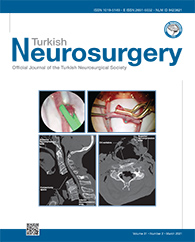MATERIAL and METHODS: The data input and analysis processes were evaluated on a timely basis to compare the traditional paper-based manual data entry method with the spine surgery database (SSD) platform data entry method. The data of 116 patients in the cervical degenerative patient group were analyzed using the upgraded version of the SSD. The subjects were analyzed with respect to the SF-36 Quality of Life Index, Nurick classification, and Japanese Orthopedic Association score. The manual and computerized patient information analyses were then compared.
RESULTS: The developed analysis module enables the instantaneous access and analysis of patient data. More importantly, the paperless evaluation module improves the post-surgery patient status evaluation time by 45.64%. For 116 patients, a physician gains up to 401 min of evaluation time in each preoperative and follow-up period without being subjected to the human errors encountered in paper records.
CONCLUSION: It is apparent that customized software solutions are absolutely necessary in patient registration and follow-up processes. The experimental results showed that using the proposed module, patient follow-up and progress analyses can be performed in a fast, effective, and accurate manner.
Keywords : Spine surgery, Outcome analysis, Analytical evaluation




